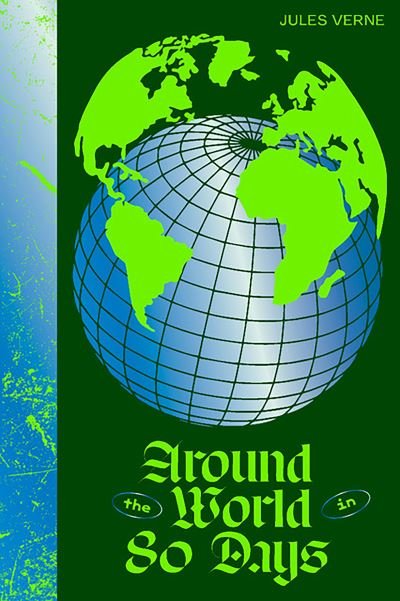
Vertel uw vrienden over dit artikel:
The Great Navigators of the Eighteenth Century
Jules Verne
The Great Navigators of the Eighteenth Century
Jules Verne
The Great Navigators of the Eighteenth Century By Jules VerneCasting a visionary eye over the 18th century, Jules Verne traces navigation to the first astronomers and cartographers in this monumental history of early expeditions. Assessing the influence of Captain Cook and his predecessors in the first part of the book, he then introduces the reader to the remarkable efforts of French navigators across the globe in a gripping narrative. Before we enter upon a recital of the great expeditions of the eighteenth century, we shall do well to chronicle the immense progress made during that period by the sciences. They rectified a crowd of prejudices and established a solid basis for the labours of astronomers and geographers. If we refer them solely to the matter before us, they radically modified cartography, and ensured for navigation a security hitherto unknown. Although Galileo had observed the eclipses of Jupiter's satellites as early as 1610, his important discovery had been rendered useless by the indifference of Governments, the inadequacy of instruments, and the mistakes committed by his followers. In 1660 Jean Dominique Cassini published his "Tables of the Satellites of Jupiter," which induced Colbert to send for him the following year, and which obtained for him the superintendence of the Paris Observatory. In the month of July, 1671, Philippe de la Hire went to Uraniborg in the Island of Huen, to take observations for the situation of Tycho Brahe's Observatory. In that spot he calculated with the assistance of Cassini's Tables, and with an exactitude never before obtained, the difference between the longitudes of Paris and Uraniborg. The Academy of Sciences sent the astronomer Jean Richter the same year to Cayenne, to study the parallaxes of the sun and moon, and to determine the distance of Mars and Venus from the earth. This voyage, which was entirely successful, was attended with unforeseen consequences, and resulted in inquiries shortly after entered into as to the shape of the earth. Richter noticed that the pendulum lost two minutes, twenty-eight seconds at Cayenne, which proved that the momentum was less at this place than at Paris. From this fact, Newton and Huyghens deduced the flatness of the Globe at the Poles.
| Media | Boeken Paperback Book (Boek met zachte kaft en gelijmde rug) |
| Vrijgegeven | 20 maart 2022 |
| ISBN13 | 9781458331489 |
| Uitgevers | Lulu.com |
| Pagina's | 336 |
| Afmetingen | 148 × 210 × 19 mm · 439 g |
| Taal en grammatica | Engels |
Meer door Jules Verne
Anderen hebben ook gekocht
Bekijk alles van Jules Verne ( bijv. Paperback Book , Hardcover Book , Book , CD en Bound Book )





![Cover for Jules Verne · The Jules Verne Collection (Boxed Set): Journey to the Center of the Earth; Around the World in Eighty Days; In Search of the Castaways; Twenty Thousand Leagues Under the Sea; The Mysterious Island; From the Earth to the Moon and Around the Moon; Off on a (Paperback Book) [Boxed Set edition] (2024)](https://imusic.b-cdn.net/images/item/original/381/9781665934381.jpg?jules-verne-2024-the-jules-verne-collection-boxed-set-journey-to-the-center-of-the-earth-around-the-world-in-eighty-days-in-search-of-the-castaways-twenty-thousand-leagues-under-the-sea-the-mysterious-island-from-the-earth-to-the-moon-and-around-the-moon-o&class=scaled&v=1691793703)





![Cover for Jules Verne · Around the World in Eighty Days - The Jules Verne Collection (Paperback Book) [Reissue edition] (2024)](https://imusic.b-cdn.net/images/item/original/213/9781665934213.jpg?jules-verne-2024-around-the-world-in-eighty-days-the-jules-verne-collection-paperback-book&class=scaled&v=1696237849)











![Cover for Jules Verne · Around the World in Eighty Days (Junior Edition) (Esprios Classics) (Paperback Book) [Junior edition] (2024)](https://imusic.b-cdn.net/images/item/original/002/9781714564002.jpg?jules-verne-2024-around-the-world-in-eighty-days-junior-edition-esprios-classics-paperback-book&class=scaled&v=1639261966)









![Cover for Herman Melville · Moby Dick - Wordsworth Classics (Paperback Book) [Paperback] (1992)](https://imusic.b-cdn.net/images/item/original/087/9781853260087.jpg?herman-melville-1992-moby-dick-wordsworth-classics-paperback-book&class=scaled&v=1397039332)





![Cover for Robert Louis Stevenson · Dr Jekyll and Mr Hyde - Wordsworth Classics (Paperback Book) [New edition] (1993)](https://imusic.b-cdn.net/images/item/original/612/9781853260612.jpg?robert-louis-stevenson-1993-dr-jekyll-and-mr-hyde-wordsworth-classics-paperback-book&class=scaled&v=1418377379)
![Cover for Henning Kure; Peter Madsen · Valhalla: Den Samlede Saga: Valhalla: Den samlede saga 4 (Bound Book) [1e uitgave] [Indbundet] (2011)](https://imusic.b-cdn.net/images/item/original/848/9788711425848.jpg?henning-kure-peter-madsen-2011-valhalla-den-samlede-saga-valhalla-den-samlede-saga-4-bound-book&class=scaled&v=1319061611)
![Cover for Bob Dylan · Den moderne sang (Bound Book) [1e uitgave] (2022)](https://imusic.b-cdn.net/images/item/original/088/9788743404088.jpg?bob-dylan-2022-den-moderne-sang-bound-book&class=scaled&v=1667486456)
![Cover for Søren Baastrup · En djævel i den lyse nat (Paperback Book) [2e uitgave] (2021)](https://imusic.b-cdn.net/images/item/original/535/9788772384535.jpg?soeren-baastrup-2021-en-djaevel-i-den-lyse-nat-paperback-book&class=scaled&v=1619180745)
![Cover for Bo Kalvslund · Lav computerspil på din iPad (Paperback Book) [1e uitgave] (2020)](https://imusic.b-cdn.net/images/item/original/996/9788799845996.jpg?bo-kalvslund-2020-lav-computerspil-paa-din-ipad-paperback-book&class=scaled&v=1594246666)
![Cover for Kim Fupz Aakeson; Niels Bo Bojesen · Vitello: Vitello tigger en masse slik (Bound Book) [1e uitgave] [Indbundet] (2014)](https://imusic.b-cdn.net/images/item/original/697/9788702157697.jpg?kim-fupz-aakeson-niels-bo-bojesen-2014-vitello-vitello-tigger-en-masse-slik-bound-book&class=scaled&v=1412946701)